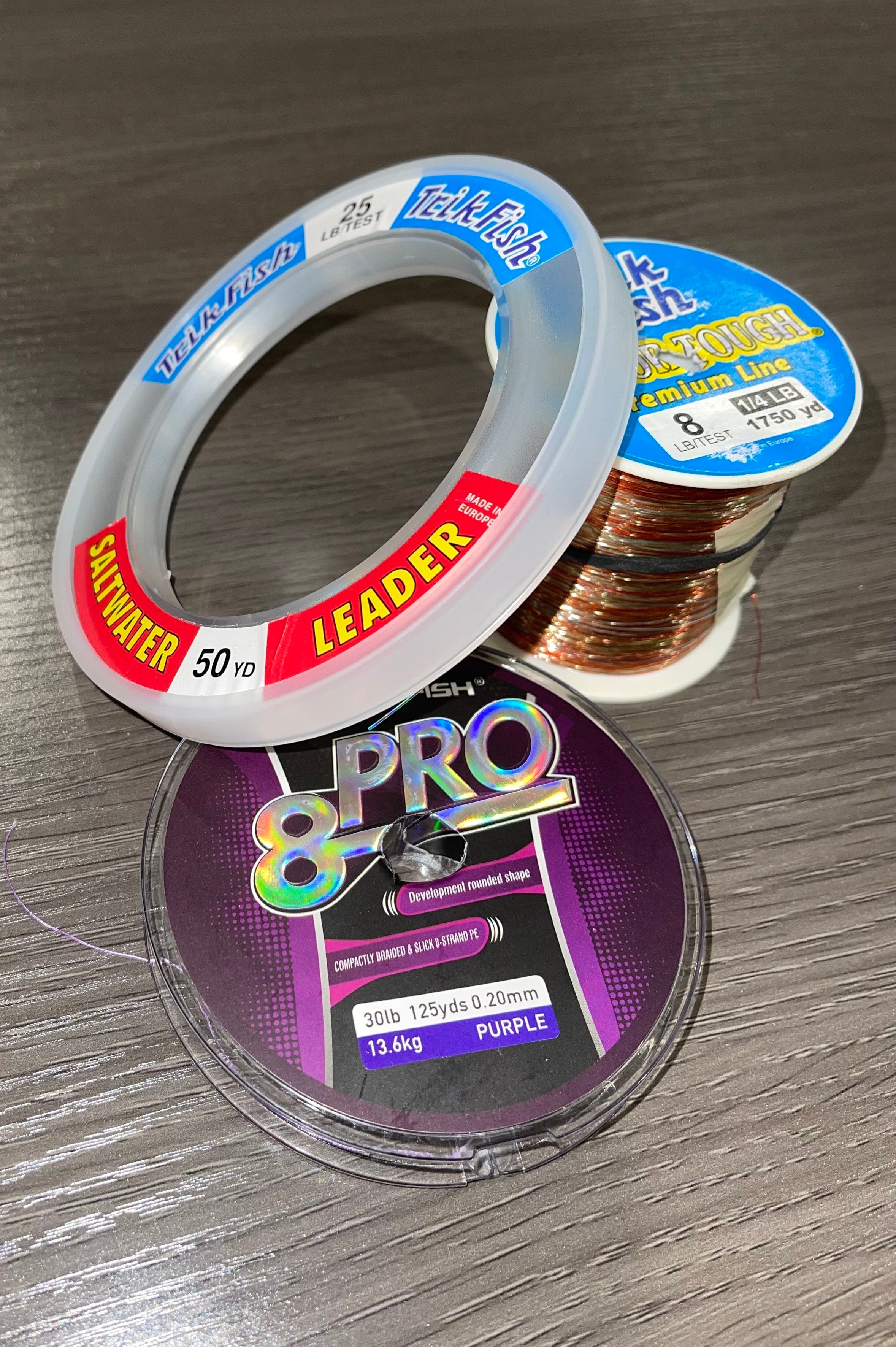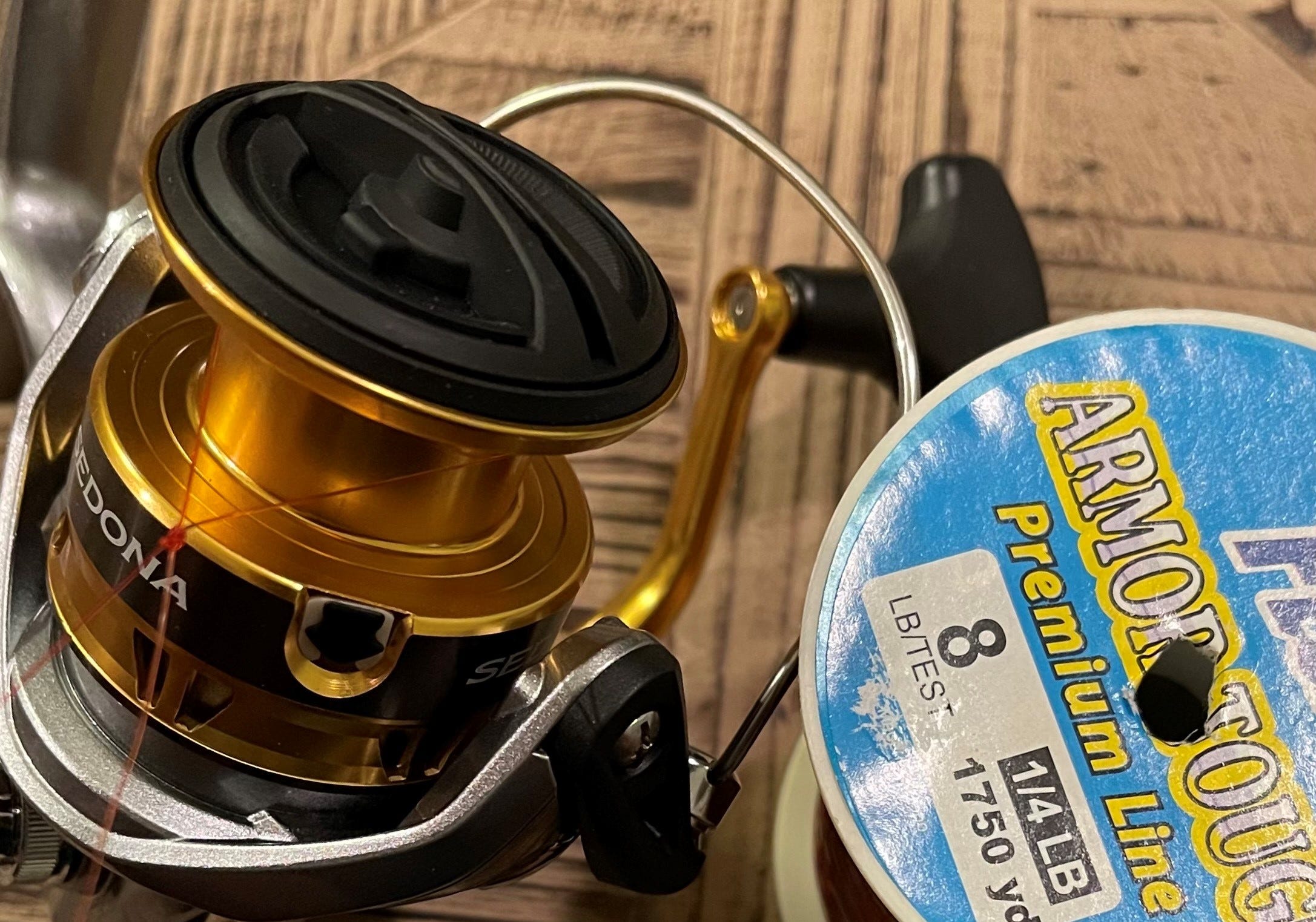Long, Accurate, and Tangle Free Casting: Spooling a Reel with Braided Line, Backing, and Leader
Why is it when you fish with a guide’s equipment it just feels smoother and works better? In addition to top-notch rods and reels, any captain would tell you line management is super important to long smooth casts and landed fish. Keep in mind there are only three things that connect you to the fish of a lifetime, your hook, line, and knots. Making sure all three of these are strong is crucial in saving any angler from heartbreak.
What’s the Right Line For You?
When spooling up your reel it’s hard not to consider braid. Braided fishing line is one of the greatest recent additions to the sport of fishing. When looking for great casting, super strong, and versatile line look no further. However, a braided line can be a nightmare if not handled or prepared correctly.
Mishandled braid can lead to wind knots, short casts, and choppy drag. Here are the things to consider when using braided line.
Choosing the Right Braided Line
Price and Quality:
As with any fishing line you get what you pay for. Higher quality spectra fiber braided lines are the top tier. However, there are more cost-effective options for the fair-weather fisherman.
A great way to reduce the cost of braid is to use a backing on your reel.
Backing:
Using backing allows you to swap your mainline easier and more often ensuring fresh, strong line. The great thing about braid is the strength to diameter ratio, 20lb test braid has about the same size diameter as the standard 6lb monofilament line. What this also means is in order to fill your spool entirely you may have to use a filler line “backing”.
A good rule of thumb for inshore saltwater or freshwater fishing is to use a 50/50 ratio of braid to backing, but you should always have at least 75yds of braid on your reel. 8-15 pound monofilament is a good choice for the backing line. When fighting a fish or casting the only line out should be your mainline, so the strength and usability of your backing is not crucial.


Breaking strength (Lb Test):
When bass fishing 15- 30lb is most common for spinning tackle and 40-65lb on baitcasting reels. Slightly stronger pound tests can be used for light tackle inshore saltwater fishing. When going for big game species it is not uncommon to use 50 to over 100lb test braided lines.
Usually, braided line is plenty strong so the first concern when choosing the right line for the reel is the ease of casting and spooling.
Leader:
The major disadvantage of braid is visibility. Lines like mono and fluorocarbon have reduced visibility and therefore make for great leader material. A leader is a shorter piece of line connected to your main braided line to help reduce the visibility of your bait or lure presentation. Leaders should be at least 24” and the standard is 2-6ft long but for some applications can be up to 30ft.
Monofilament: "Mono" has stretch, floats, and is nearly invisible underwater. If fishing floating lures, or want to have a cushion of stretch for vicious hooksets or strong fish mono is your choice.
Fluorocarbon: The standard choice for most fishing today. Fluorocarbon can be difficult to use on a spinning reel but makes a great leader. Almost zero stretch or visibility means ultimate sensitivity and a stealthy presentation.
Knot Selection
Uni knot: A good choice for securing the backing to your spool, it is simple to tie and easily sinches down tight to the spool.
Double uni knot: Perfect for attaching braided line to the backing. This knot is easy to tie and really tiny so it won’t snag your braided line when casting or fighting a fish.
FG knot: The perfect leader to braided mainline knot. The FG knot is gaining popularity in the fishing world for good reason. It is a bit tricky to tie at first but after the first couple of tries tying and fishing with it you won’t want to use anything else for attaching your leader. This knot is super strong and very slick meaning it won’t catch on your rod guides when casting, resulting in further more accurate casts.


Line Application
Now that you’ve chosen the right lines and knots to use it’s time to spool up! There are a ton of different ways to apply the line to your reel. It seems like every angler has his own style from throwing the spool in a bucket of water to using a specific line holding apparatus. When using large offshore conventional reels, fly reels or you’re a novice letting your local tackle shop put the line on isn’t a bad idea. When it comes to inshore saltwater fishing or standard freshwater fishing applications there’s no reason not to put the line on yourself, this ensures you will get the best out of your line.
After studying multiple techniques and tactics the following system is a great all-around approach to applying backing and braided fishing line to your reel.
- Place the center hole of your spool on a peg or something that holds the spool in place while still allowing it to rotate. Run the line through the first guide on your rod and attach it to your reel or backing line.
- Take a small rag and slightly dampen it with water.
- Fold the rag around the line and hold the rag tightly against the rod beneath the first guide.
- Tighten your drag to prevent slipping and start reeling. There should be resistance on the line when reeling in, making sure the braided line goes on tight is super important! Tight line means smooth casts and drag. If your braid is too loose it will tangle during casts and prevent the drag from running smooth.
- Fill your spool with line until the inner lip of the spool is just barely visible. Inexperienced anglers may want to leave up to 1/8” of the inner spool lip visible, this will slightly reduce your casting distance but your chance of wind knots or tangles is greatly reduced.
- Attach your leader, run the line through your rod guides and attach your favorite lure. You’re ready to fish!
Ask any guide or pro angler, how you prepare for your day on the water is just as important as the time spent fishing! Following this process will lead to successful days on the water. The small details in tackle preparation make a huge difference in your success as an angler!
